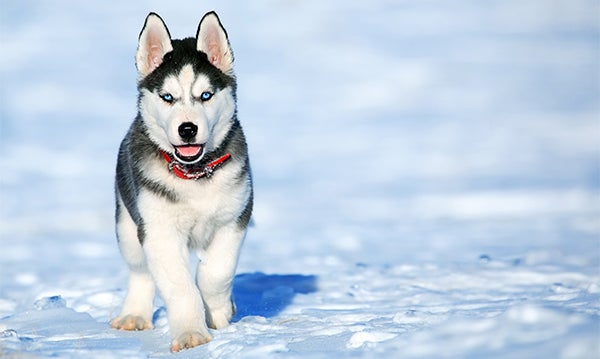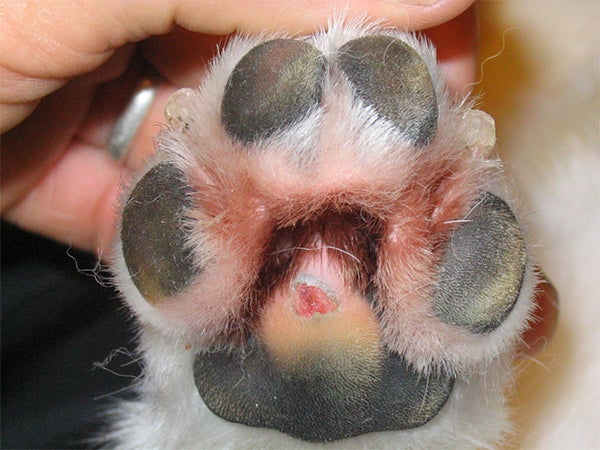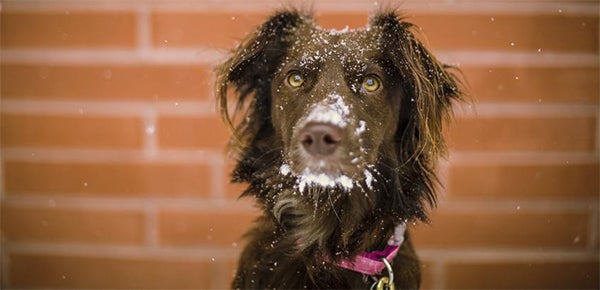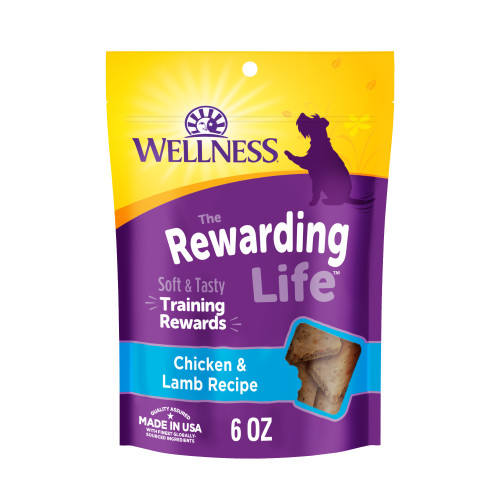January 15, 2018
Is Your Dog at Risk of Frostbite? What Every Dog Lover Should Know
All you need do to do is look at a U.S. weather map or step outside to learn that nearly the entire country is experiencing uncommonly cold, freezing temperatures. It’s icy in Austin, snowy in Nashville and stormy up and down much of the East Coast. As you scramble to add layers of clothing this season, don’t forget about your pets. It’s a common misconception that because they have fur, dogs will stay warm in winter weather, but that’s not the case. As the mercury drops, frostbite in pets is a real risk.
What is Frostbite?
Frostbite is a condition that damages body tissue, is extremely painful and in severe cases can require amputation. It’s also a precursor to hypothermia which can be fatal.
You may be thinking that your dog stays inside most of the time anyway. Yet, pups still need exercise and bathroom breaks. Here’s what you need to know when it comes to protecting your pooch from the cold.

As you can guess, any weather event entitled a “bomb-cyclone” is a good reason to reduce your dog’s outdoor activities. But even weather less severe can put your dog at risk. It turns out that frostbite can take hold of your dog in less than 30 minutes. Of course, certain breeds are at greater risk than others.

Who’s Most at Risk for Frostbite?
Huskies, Samoyeds, and other winter breeds are bred for cold weather so they can withstand colder temps than many short-haired dogs. These dogs are most susceptible to frostbite:
- Small dogs
- Puppies
- Short-haired dogs
- Senior dogs
You may wonder how frostbite works. It’s caused by a simple restriction of the blood vessels in the extremities in temperatures below 32 degrees. You may have experienced this yourself in cold fingers or toes. Your dog is likely to feel that type of cold at the tips of the ears, the paws and the tail. Instead of having normal blood flow circulating throughout your dog’s body, the blood flow circulates primarily around the core to keep your dog’s core body temperature warmer leaving the exposed areas vulnerable.
The Symptoms of Frostbite
As you can imagine, frostbite can be painful. Your dog may even wince at a gentle touch or may hesitate to walk on affected areas.
Other symptoms include:
- Discolored skin- skin may be unusually pale, or even shades of blue or gray.
- Swelling or blisters on your dog’s skin.
- Cracked, red, and inflamed skin.

If it’s been extremely cold and your dog starts showing these symptoms, do call your veterinarian for recommendations.
Cats Are At Risk, Too
Although we’re focusing on dogs, it’s important to know that frostbite affects cats as well. We don’t recommend letting your cat outside in cold temperatures. If you have community cats that are outside, you can create a well-insulated shelter with dry bedding. Wet bedding is extremely dangerous in cold temperatures. Line the inside of the shelter with straw and pillowcases loosely stuffed with shredded newspaper. Here’s more detail on how to help them through the winter.
Help Your Pet Thrive Through the Winter
So, what’s a dog lover to do? Now that you know frostbite is a danger, even in 30-degree weather, you need alternative ways to entertain your dog. Especially if you have an active dog, you know you can’t simply limit them to 3-4 short outings a day. They need more.

3 Ways to Stay Active with Your Dog During the Depths of Winter
While physical exercise is necessary, so is mental stimulation. If you doubt me, think of what happens when bored children are left alone for too long. They’ll create their own entertainment and it usually creates a big mess for you to clean up. It’s no different with your dog.
Here are three ways you can stay active with your dog no matter how frightful the weather.
1. The Nose Knows
“Nosework” is fun activity for many dogs that allows them to use their enhanced olfactory skills. The idea is that your dog waits and watches while you place treats throughout the room. Under a chair, on the coffee table, you can break up the treats and put them in strategic locations. Then, when you “release” your dog, he runs around and finds the treats.
2. Enhanced Training
This is also great for mental stimulation. For example, if your dog won’t hold still while you “hide” treats around the room, then you can work on that skill. Having your dog sit and hold, then release when you say the word keeps your dog engaged and can prove handy when you have guests over so Max doesn’t jump all over them.
3. Indoor Dog Parks
If you have an active dog, you need to provide opportunities for burning off energy. Otherwise, your furniture may become chew toys. Climate controlled indoor dog parks are popping up all over the country and are a great way to help your dog get the exercise he needs.
Now that you have an idea of the dangers of frostbite and how it can affect your dog, as well as alternatives to spending time outside in the snowy cold, how will you protect your dog this winter?






